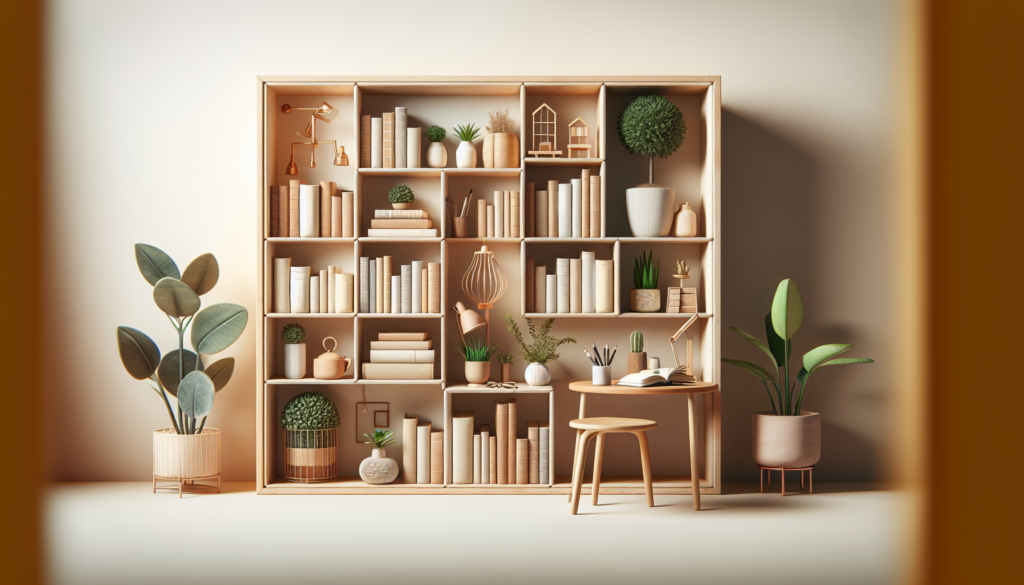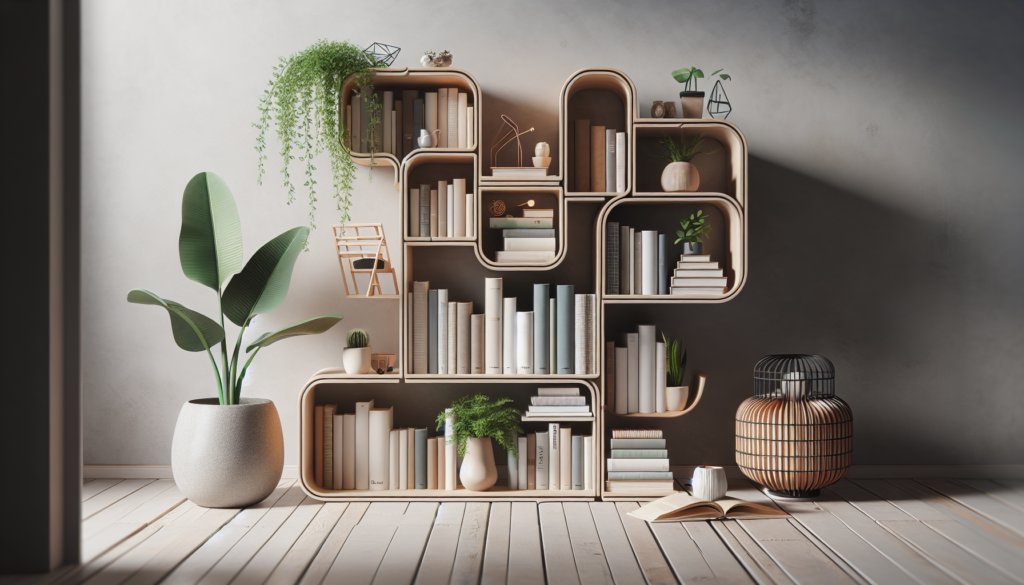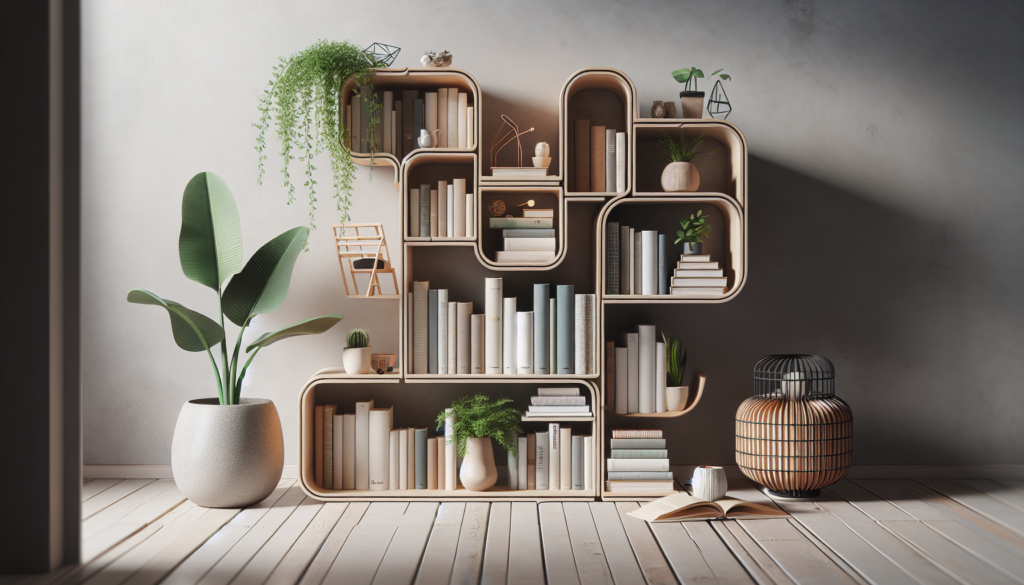Are you a book lover who is considering a transition to tiny living? Downsizing your book collection might seem like a daunting task, but with a little organization and a friendly approach, it can be a rewarding experience. In this article, we will explore some practical tips and strategies to help you pare down your books while still preserving the joy of reading and the essence of your favorite stories. So, grab a cup of tea and join us on this journey of downsizing your book collection for tiny living.
Maintaining a Minimalist Approach
Living in a small space can be challenging, but it also offers a unique opportunity to embrace minimalism and simplify your life. One area where you can make a significant impact is by downsizing your book collection. By adopting a minimalist approach to your books, you can create a more spacious and organized living environment. Not only will this make your tiny living space feel larger, but it will also make it easier to find and enjoy the books that truly matter to you.
Considering the Benefits of Downsizing
Downsizing your book collection offers numerous benefits. First and foremost, it allows you to declutter your living space and create a more minimalist and organized environment. This can reduce stress and create a sense of calm in your home. Additionally, downsizing can help you prioritize the books that truly resonate with you, allowing you to focus on quality over quantity. It also gives you the opportunity to free up valuable space for other uses. Whether you want to create a home office, a cozy reading nook, or simply have more room to move around, downsizing your book collection can help you achieve these goals.
Assessing Your Current Book Collection
Before you start downsizing, take the time to assess your current book collection. Begin by gathering all your books in one place, whether it’s on your bookshelves or scattered throughout your home. This will give you a clear picture of the size and scope of your collection. As you evaluate each book, ask yourself if it sparks joy, if it holds sentimental value, and if it aligns with your current interests and lifestyle. Be honest with yourself and remember that letting go of books can be a liberating experience.
Identifying Essential Books to Keep
Once you’ve assessed your collection, it’s time to identify the essential books you want to keep. These are the books that have a significant meaning to you, books you refer to regularly, or books you plan on reading in the near future. Consider the books that have had the biggest impact on your life or the ones you simply cannot imagine living without. This will help you prioritize and ensure that the books you keep are the ones that truly matter to you. Remember, it’s important to curate a collection that brings you joy and aligns with your current interests and goals.
Choosing the Right Storage Solution
Once you have decided which books to keep, it’s essential to find the right storage solutions for your downsized collection. The goal is to maximize space efficiency while keeping your books easily accessible. Here are a few storage options to consider:
Exploring Space-Saving Bookshelves
Space-saving bookshelves are a great option for tiny living. Look for bookshelves that have a slim profile, such as ladder-style or corner bookshelves, which can fit into tight spaces. Another option is adjustable shelving that allows you to customize the height and width of each shelf to accommodate different book sizes.
Utilizing Functional Furniture with Built-in Storage
Incorporating functional furniture with built-in storage is an excellent way to optimize the use of space in a tiny home. Look for ottomans, coffee tables, or side tables with hidden compartments where you can store books. These multi-purpose pieces of furniture not only provide storage but also serve as stylish additions to your living space.
Optimizing Vertical Space with Wall-Mounted Shelves
When floor space is limited, consider utilizing wall-mounted shelves to store your books. This not only allows you to make use of vertical space but also adds a decorative element to your walls. Look for floating shelves or wall-mounted bookcases that can hold your books securely while adding a touch of style to your tiny living space.

Digitizing Your Book Collection
In addition to physical storage solutions, digitizing your book collection can help reduce clutter and save space in your tiny home. Here are some steps to consider:
Exploring E-Book Options
E-books offer a convenient way to access and read books without the physical space they require. Explore various e-book platforms and devices to find one that suits your preferences. Whether you choose a dedicated e-reader or an app on your smartphone or tablet, e-books allow you to carry your entire library with you wherever you go.
Converting Physical Books to E-Books
If you have a significant number of physical books that you no longer wish to keep, consider converting them to e-books. Some scanning services allow you to digitize your paper books, creating electronic copies that you can store on your devices or in the cloud. This way, you can still access your favorite books without taking up physical space.
Organizing and Managing Your Digital Library
As you build your digital book collection, it’s important to organize and manage your library effectively. Utilize folders or tags to categorize your e-books based on genre, author, or any other system that works for you. This will make it easier to find and access your books when you want to read them.
Considering Alternative Formats
If you’re looking to minimize physical clutter even further, consider exploring alternative book formats that take up less space. Here are a few options to consider:
Exploring Audiobooks and Podcasts
Audiobooks and podcasts offer a unique way to enjoy books without the need for physical copies. With audiobooks, you can listen to your favorite novels while doing other activities, such as commuting or exercising. Similarly, podcasts provide a wealth of knowledge and entertainment on various topics, including literature and book discussions.
Using E-Readers and Tablets
E-readers and tablets offer the convenience of reading digital books while still maintaining a book-like experience. E-ink technology used in e-readers can replicate the look and feel of paper, making them a popular choice for avid readers who appreciate the traditional reading experience. Tablets, on the other hand, provide a more versatile platform, allowing you to access e-books, audiobooks, podcasts, and other digital media.
Borrowing Books from Libraries or Friends
If you’re reluctant to part with physical books altogether, consider borrowing books from libraries or friends. This allows you to enjoy a wide range of books without the need to keep them permanently. Many libraries now offer e-book borrowing programs, making it even easier to access a vast collection of titles without cluttering your space.

Selling or Donating Unused Books
Once you’ve downsized your book collection, you’ll likely have books that you no longer need or want. Instead of letting them gather dust, consider selling or donating them. Here are some options to consider:
Researching the Value of Books
If you have rare or collectible books, it’s worth researching their value before deciding whether to sell or donate them. Consult online resources or reach out to book collectors or specialized bookstores to get an idea of their worth. This way, you can make an informed decision about how to handle these books.
Selling Books Online or at Secondhand Bookstores
Online marketplaces and secondhand bookstores are great places to sell your unwanted books. Platforms like eBay, Amazon, and AbeBooks allow you to list and sell books directly to potential buyers. Secondhand bookstores may also offer fair prices for books they are interested in, providing an opportunity to make some money while freeing up space.
Donating Books to Local Libraries or Organizations
If you’re not interested in selling your books, consider donating them to local libraries, schools, or organizations. This way, you can support literacy initiatives and provide others with access to books they may not have otherwise. Reach out to your local library or community organizations to find out where you can donate your books.
Curating a Select Collection
Once you’ve downsized your book collection, it’s important to curate a select collection of books that spark joy and align with your interests. Here are some tips to help you curate your collection:
Choosing Books That Spark Joy or Align with Your Interests
When deciding which books to add to your curated collection, choose the ones that truly spark joy or align with your interests. Ask yourself if a particular book brings you happiness and if it’s something you would read or refer to regularly. Curating your collection allows you to focus on quality over quantity and build a library that truly reflects your personality and passions.
Prioritizing Multi-Purpose Books
To make the most of your limited space, prioritize multi-purpose books. These are books that serve multiple purposes, such as cookbooks that also include tips on kitchen organization or travel guides that offer practical packing advice. By choosing books that provide more than just reading enjoyment, you can maximize the value and utility of each book in your collection.
Embracing Minimalism While Still Enjoying Reading
Remember that embracing a minimalist approach to your book collection doesn’t mean you have to sacrifice your love of reading. Instead, it’s about being intentional and choosing books that truly enrich your life. By curating a select collection and being mindful of your space constraints, you can still enjoy the pleasures of reading while living in a tiny home.
Creating a Rotating Library
If you find it challenging to part with certain books, consider creating a rotating library system. Here’s how you can do it:
Arranging Book Swaps with Fellow Book Lovers
Connect with fellow book lovers in your community and arrange book swaps. This allows you to share books with others and enjoy a variety of reading materials without permanently keeping them. Rotate your books among your book-loving friends and enjoy the excitement of discovering new titles and authors.
Participating in Book Exchanges or Book Clubs
Joining book exchanges or book clubs can also provide opportunities to have access to a broader range of books. Many book clubs offer book rotation systems where members can exchange books on a regular basis. This allows you to enjoy new reads while keeping your physical book collection to a minimum.
Using Community Libraries or Little Free Libraries
Community libraries and Little Free Libraries are excellent resources for book lovers living in tiny spaces. These small book-sharing stations can be found in neighborhoods or public spaces, allowing you to borrow books and return them when you’re done. This way, you can enjoy a wide array of books without cluttering your home.
Maximizing Storage Space
In a tiny living space, it’s essential to maximize storage space to make the most of what you have. Here are some tips to help you maximize storage for your books:
Using Storage Boxes or Bins
Storage boxes or bins can be a great solution for keeping your books organized and easily accessible. Choose boxes or bins that fit your space and stack them neatly. Label each box or bin accordingly, so you know exactly where to find specific books when you need them.
Utilizing Under-bed or Hidden Storage
Under-bed or hidden storage can be a valuable option when space is limited. Invest in under-bed storage containers or utilize storage compartments built into your furniture. This way, you can utilize space that would otherwise go unused while keeping your books safely tucked away.
Don’t Forget About Digital Storage
While physical storage is important, don’t forget about digital storage for your e-books. Utilize cloud storage services or external hard drives to keep your digital library secure and accessible. This ensures that your e-books are not taking up unnecessary space on your devices while still being readily available whenever you want to read them.
Organizing and Categorizing
An organized book collection not only makes it easier to find your books but also enhances the overall aesthetic of your tiny living space. Here are some tips for organizing and categorizing your books:
Implementing a Systematic Arrangement
Develop a systematic arrangement that works for you. This could be organizing your books alphabetically by author, grouping them by genre, or arranging them based on your personal preferences. The key is to establish a system that you can easily maintain and that makes sense to you.
Categorizing Books by Genre or Theme
Grouping your books by genre or theme can make it easier to locate specific books when you’re in the mood for a particular genre or topic. Consider dedicating specific shelves or sections for different genres, such as fiction, non-fiction, or specific genres like mystery or romance. This will help create a visually pleasing and organized book collection.
Utilizing Labels or Color Coding
Labels or color coding can be helpful visual cues for finding specific books. Use color-coded stickers or bookmarks to categorize books or mark your favorite passages. This not only adds a touch of personalization to your collection but also makes it easier to locate specific books or information within them.
Maintaining Your Downsized Collection
Once you’ve downsized and organized your book collection, it’s important to maintain it to prevent clutter from creeping back in. Here are some tips to help you maintain your downsized collection:
Regularly Assessing and Reevaluating Your Book Collection
Set aside time regularly to reassess and reevaluate your book collection. As time passes, your interests may change, and some books may no longer hold the same value to you. Regularly revisit your collection and let go of books that no longer resonate with you. This will ensure that your collection remains curated and aligned with your current interests and goals.
Avoiding Impulse Book Purchases
When it comes to maintaining a downsized collection, it’s important to avoid impulse book purchases. Before buying a new book, ask yourself if it aligns with your current interests and if it’s a book you genuinely plan on reading. By being mindful of your purchases, you can prevent your collection from growing beyond what you can comfortably accommodate.
Staying Disciplined and Mindful of Your Space
Finally, staying disciplined and mindful of your space is crucial to maintaining a downsized book collection. Whenever you consider adding a new book to your collection, think about whether you have enough space to store it and if it truly adds value to your curated library. By staying focused on your minimalist goals, you can continue to enjoy the benefits of a downsized collection in your tiny living space.
In conclusion, downsizing your book collection for tiny living is a journey that requires thoughtful consideration and intentional choices. By adopting a minimalist approach, choosing the right storage solutions, digitizing your collection, considering alternative formats, and curating a select collection, you can create a harmonious balance between your love for books and your tiny living space. Remember to stay disciplined and regularly reassess your collection to ensure it remains aligned with your changing interests and goals. With these strategies in place, you can enjoy the pleasures of reading while embracing the simplicity and organization that minimalism brings to your tiny home.

